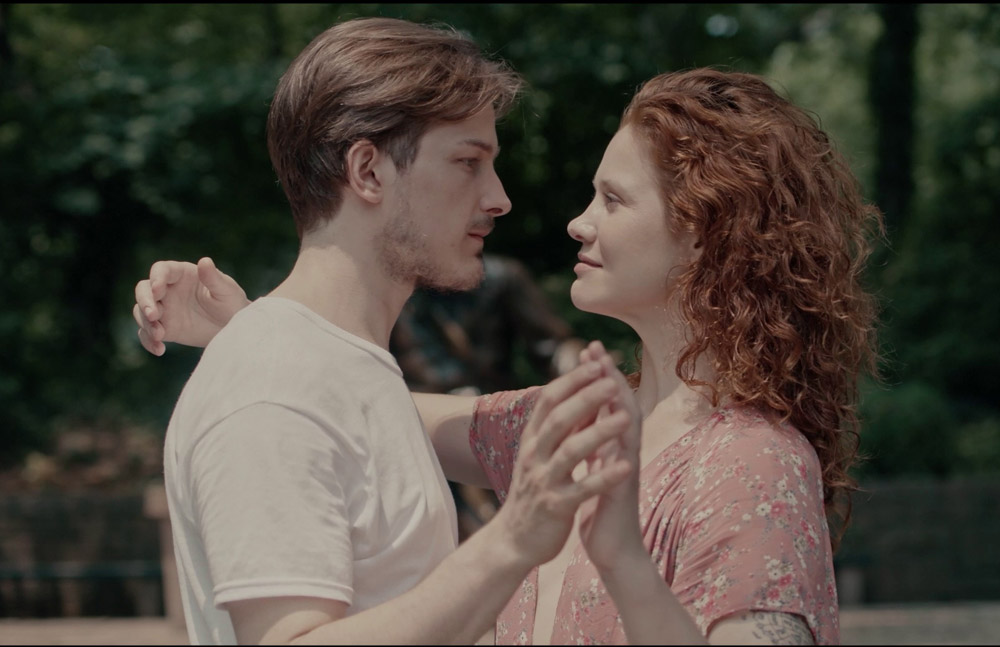“I think we should let the physical take its own course and not force anything right away,” Aviva says in a cafe, on an early date with a new romantic possibility in Eden, in the film that bears their name. Played at the time by Zina Zinchenko, Aviva is more right than she knows, in spite of quickly breaking her word to jump into bed with Eden when the actress is replaced on screen with the actor Or Schraiber and Tyler Phillips, the actor initially cast in the role of Eden shape shifts into the actress Bobbi Jene Smith. They are dancers first and foremost, which is what makes Boaz Yakin’s ingenious new drama so compelling as it expresses the fluidity of roles within a relationship from being friends versus lovers to feeling young or old to living up to the traditional gender standards as part of a constant — and quite literal — pas de deux.
If any filmmaker could be expected to make such a film like “Aviva,” it would be Yakin, who has moved gracefully throughout a career defying any labels one would want to attach to him, making family friendly Hollywood fare such as “Max” and “Remember the Titans” and provocative drams such as “Fresh,” “A Price Above Rubies” and “Death in Love,” with a Jason Statham flick (“Safe”) thrown in for anyone who thought they had him pegged. Films this experimental rarely arrive with the degree of skill that this director brings to the table, but the film also would seem to draw some inspiration from, among other personal travails, the end of his marriage to “Honey Boy” director Alma Har’el, who wondered what love was in her own film “Lovetrue,” made just after their divorce.
The two have to be on good terms these days when it was Har’el, who introduced Yakin to the dancer/choreographer Smith after awarding the 2017 documentary made about her (“Bobbi Jene”) the Best Documentary prize at the Tribeca Film Festival, and the match appears to have sparked both of their imaginations as Smith creates a number of physically dazzling and daring performances that equal Yakin’s desire to push the envelope as far as the film’s frank depictions of sex and the raw emotions of a turbulent love affair. As instincts are translated so vividly into action in how Aviva and Eden dance around each other, the film exposes the unseen barriers to understanding one another as well as bringing to light the ineffable ways in which two people can connect.
While “Aviva” was set to debut earlier this year at SXSW, fate had other plans when the festival was cancelled as a result of the coronavirus, but after mastering so many other crafty contortions through telling this particular story, Yakin has rolled with the punches and is putting some joy into the world with the release of his exuberant new film. Shortly before making its debut in virtual cinemas, the writer/director spoke about the urge to experiment at this point in his career, transforming plot points into dance steps with Smith and filming with abandon in the city.
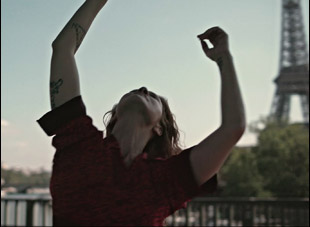
Every once in a while I feel this need to do something that completely has no rules or is completely just done for itself without worrying who’s going to like it or who’s not going to like it, just exploring things I’ve never explored before in a completely personal and interesting way. I’ve been wanting to tell a story that deals with the masculine/feminine imbalance within the self and the struggle that I’ve experienced in that particular regard and how it affects relationships externally, and I knew I could do this thing where I cast a man and a woman to play each of the two main characters, but I didn’t really have a way in.
Coming from a background where I had been exposed to movement and dance and mime – my parents were pantomimes and my father’s a movement teacher at Julliard — I’ve been wanting to do something that deals with that too, so I was having a coffee with an old dancer friend of mine and he was like, “Why don’t you make that [idea about the masculine/feminine] as a dance movie?” And everything just clicked for me. Every once in a while, there’s just this synchronicity when something just comes into your mind, but it’s really hard to understand that moment even for yourself. In the context of a normal dramatic film with the usual “rules” that dramatic films play by, I think my imagination was hamstrung and once I was ready to introduce the dance element into it, basically make the entire film a theatrical, experimental look into how these experiences feel, the dance freed me.
From the start, I was taken by how it shows ideas of programming in terms of gender and sex that it eventually unravels. What was it like creating the sequences that could articulate those formative moments?
One of the things that occurred to me is that whenever we meet somebody, we meet somebody new as adults, a potential lover or friend even, but when we kiss somebody for the first time, we’re bringing an entire lifetime – as you say programming, or this whole gigantic baggage car of experiences into that one moment, so I kind of wanted to play with that idea that these two people are about to meet for the first time, but what they’re bringing with them is a crazy kind of potpourri of highlights, memories, and emotions. I don’t know about you, but there are certain things that have stuck out in my life as formative and by the time you’re an adult, whether those things really happened that way or not, they’re your personal mythology. They’re what you carry with you and what you feel made you, so I wanted to show that, so that when these characters meet, that’s what they’ve carried with them to that point.
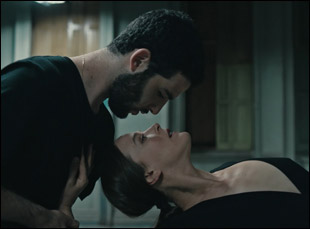
Once Bobbi Jene came onto the film, she became my full-on partner and co-creator in the movie because her choreography and the way she approaches choreography is so much a fabric of the movie. But when I wrote the script, all I could do was write where I thought the dance sequences were going to go, what they were meant to convey and the voiceovers that went with them. So I put in all the dance sequences in terms of where they were structurally into the story, but how they felt was the work of Bobbi and the incredible dancers like Zina [Zinchenko] and Or [Schraiber] that were part of it, so it was very organic in that way once we started making it. More than anything else I’d written, I felt like the script is just a blueprint because so much of what this movie is going to be is going to be created by these performers. And Bobbi’s really unique. The emotional quality that she brings to her dance and choreography I think is what sets her apart from most people and it made making the movie about emotions and sexuality and how we relate to ourselves so much clearer because of how she was able to choreograph it.
Was it a challenge to find a shooting style that was intimate and elegant at the same time?
I’ve got to give props to Arseni Khachaturan, this young cinematographer who I worked with who was a camera operator and he was just spectacular in terms of his instinctive understanding of how to move the camera and what to do with it. It was super important to both Bobbi and I that the dance scenes weren’t overly presentational, the way you normally do in movies [because] the way they do dance sequences in most narrative films, it’s very show-bizzy, for lack of a better term. Like here’s the camera, here’s the dance, ta-da. We really wanted to make it feel like dance was an organic part of the emotional tapestry of the story so that when the camera started to move inside the dance, it didn’t feel like we were doing some kind of like showbiz number, but you were just experiencing the emotions and feelings of it with the character.
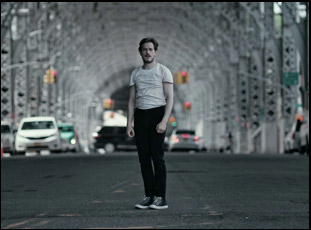
I wanted to do this crazy pantomime/dance performance piece showing this experience of traveling and what it feels like to change your life in the heat of the moment. I wrote it out, but I had no idea what Bobbi was going to do with it and we talked about it and she actually worked a little bit with my dad who’s a pantomime and came up with a few ideas in a work session. Then because we had so little prep, I literally showed up on set not knowing what Bobbi was going to do, and I knew I was going to shoot [the scene] in one take, so I was like, “Bobbi, whatever you do, we’re going to shoot this in one take.” When we got there, Bobbi showed us the outline of it and I figured out where to put the camera and then she went and did it in three or four takes. The take you see in the movie was so magical, but I really think that two-and-a-half minute piece is one of the most astonishing pieces of performance art I’ve seen in a movie and it’s really all because of Bobbi.
I’m with you on that. It looked like a fair amount of this was shot in public. Were those some crazy days?
Yeah, and part of what freed me up to do it is at the beginning of this film, it’s like, “Hey, we break the fourth wall. We’re not pretending it’s not a movie, so if we’re out in the street dancing and people look at the camera, who cares? I don’t. Let’s just go out there and do it. And we did it in France and we did it in New York and we did it in the desert. The amazing thing about being in New York is that people don’t care. Cameras have become very small, even with rigs, so if you’re in Manhattan, you can literally walk down the street shooting a dialogue scene with two people and one or two people may look over their shoulders, but as long as you’re not putting down cranes with lights and Brad Pitt in the middle of it, nobody cares. So we were able to shoot all over New York City in streets, on parks and no one ever even looked at us.
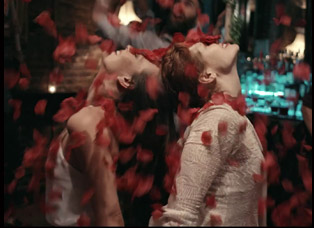
First of all, I’m so happy for all the work of all the people that are in this movie and the dancers and the choreographers to finally have the work shown. Obviously, it’s such a strange moment in time, first with the coronavirus creating this tremendous shift in our culture and now with what’s going on with George Floyd’s death, to release or talk about even a small personal film about how we relate to ourselves or our sexuality, and I’m not alone in this. Can you imagine how many people have had their films taken out of festivals and had releases cancelled and how many people in the music industry – the brilliant Asif Avidan, who did the songs for this movie, has had an album that’s been in flux because it’s just a very dramatic and challenging moment, but these things are always going to be important and they’re always going to be with us, so I believe that the film is going to have a validity and continue to have a validity for a long time.
“Aviva” will be available to stream on June 12th in virtual cinemas including Row 8, splitting the proceeds with your favorite local arthouse. Additionally, there will be livestream Q & As on June 13th and 20th at 7 pm EST with Boaz Yakin, Bobbi Jene Smith and Or Schraiber, and June 14th at 4 pm EST with Yakin and Zina Zinchenko and Tyler Phillips.




